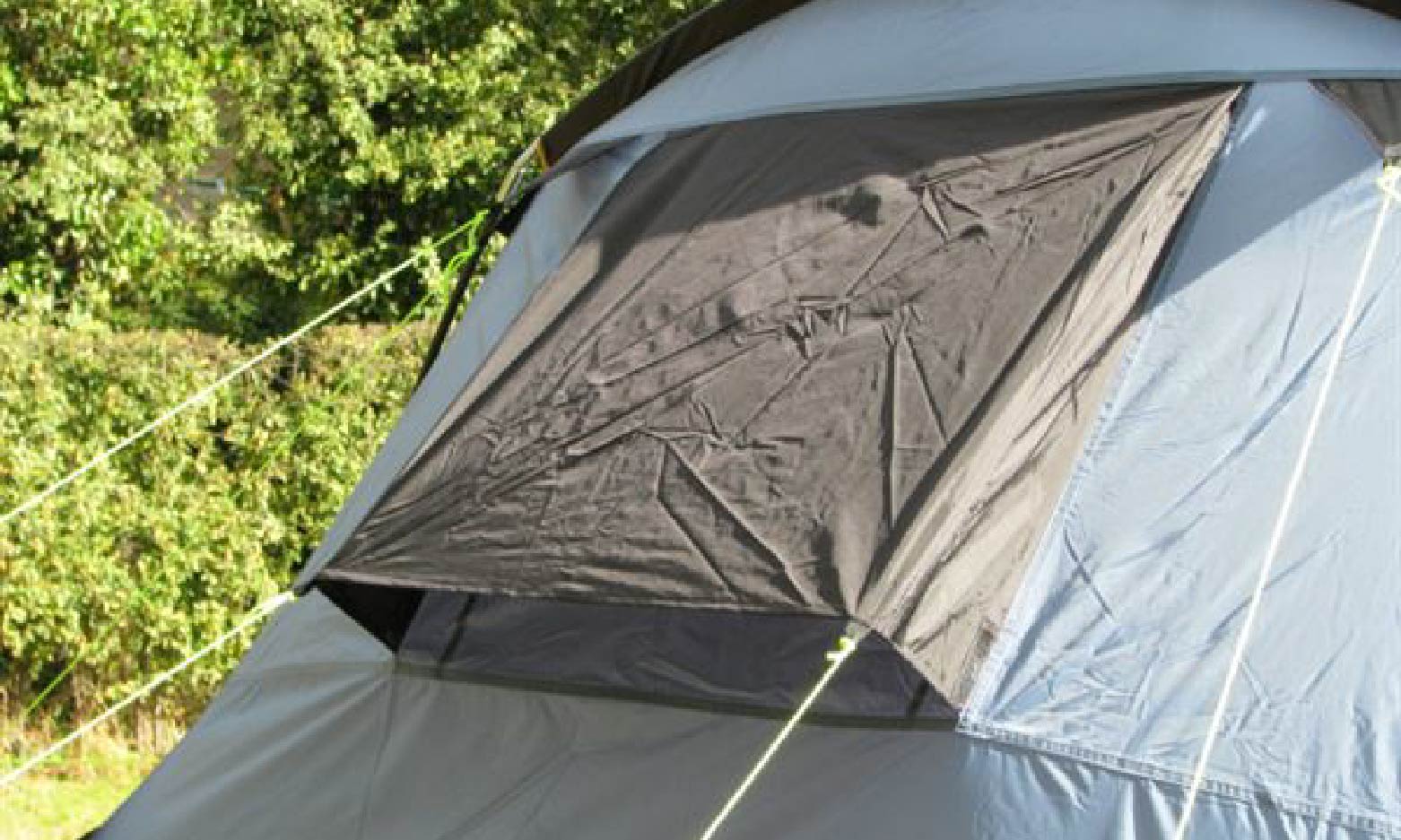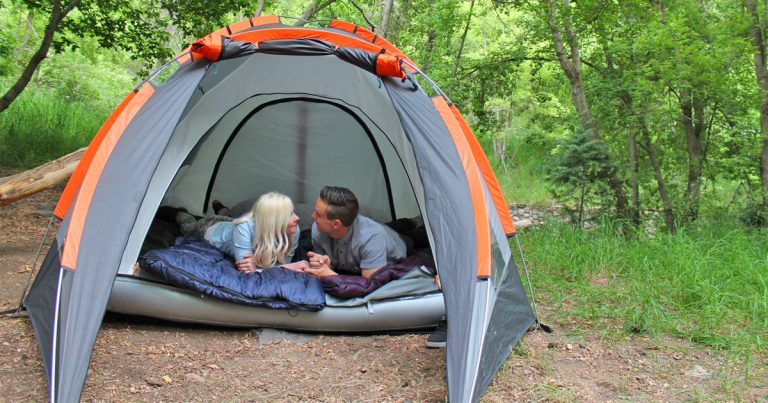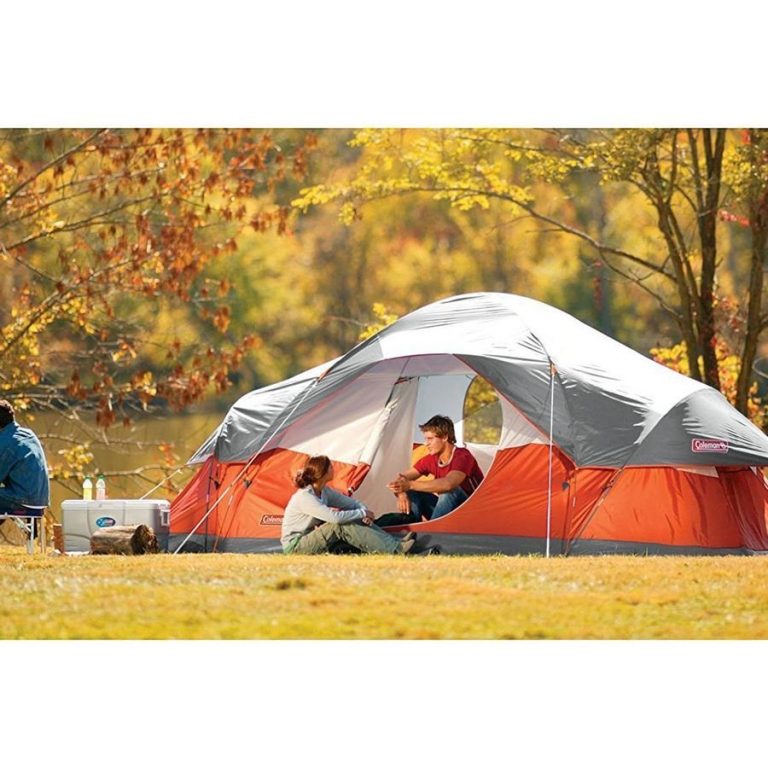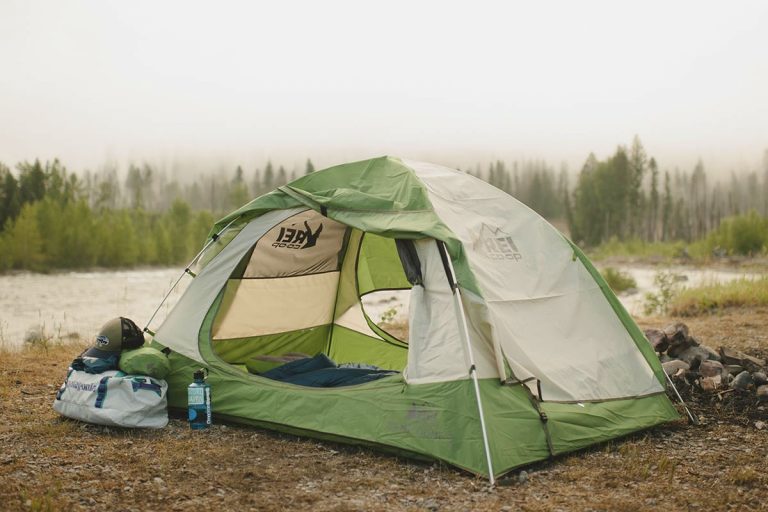What Is A Tent Vent?
Tent venting allows air to flow inside a tent by using tiny holes in the walls of the tent. It is done for various reasons, such as to prevent the tent from becoming an airless environment. When sleeping inside a tent, ventilation is of the utmost importance, mainly when it’s chilly outside. A tent vent is a circular cutout in the middle of your shelter that you cover with a mosquito net. It doesn’t matter whether you’re using a pop-up tent or a motorhome to camp; proper ventilation in the tent is essential in any camping scenario. Tent vents are an absolute need in any circumstance where you must keep the doors and windows shut. If you’re curious about the function of tent vents and the many designs available, read on! Even read how to fold pop up tents
Table of Contents
Why Is Tent Vent Important?
When it rains for extended periods, and you must keep the tent closed, you may have an unpleasant experience due to the increased heat and humidity within the tent. It is especially true if the rain continues for a long time. A tent vent is a kind of ventilation system that is attached to the outside of your tent. The airflow inside your tent will be regulated by tent vents. This maintains the temperature inside your tent at an appropriate level while minimizing the amount of condensation that forms. The term “what is a tent vent” refers to anything that may help improve the air quality within the tent by exchanging the stale air inside the tent with the fresh air from outside.
Therefore, before embarking on your next excursion, ensure you understand how to vent your tent.
What Kinds Of Tent Vents Are There To Choose From?
Floor Vents
These are low vents, which are often positioned right above the floor, and they are commonly seen below the windows. They are beneficial because they constantly bring in fresh air from the ground. The air that rises from the ground may be colder than the air that is found higher in the atmosphere. They contribute to creating vertical airflow when used in conjunction with high vents. It contributes to your enjoyment of the environment by making it more pleasant.
Roof Vents
These are openings in the tent’s fly or its roof that provide ventilation at a higher level. They play a significant role in enabling vapor to escape, which is why they are crucial. The underside of the roof will experience less condensation due to this. The typical issue with fly vents of this kind is that they could be too high. This makes it possible for rain to enter your tent when there is a strong breeze from the side. You may be able to discover some decent tents that come with an inner barrier that stops rain from getting into your tent. However, producers place them high so that the vents have optimal airflow.
On the other hand, these vents may sometimes be situated at an inappropriately low level. This results in condensation on the material above them. You see, you’ve concluded that there is some kind of compromise involved.
You will like that roof vents are standard for dome tents with either a complete or partial covering fly, and you will adore the fact that they are necessary for preventing condensation within the tent. The word “roof vent” refers to a feature seen in single-layer tents, such as when the fly serves as the roof and there is no separate inner canopy tent. Therefore, in their design, the manufacturer follows the same reasoning as the rationale behind the creation of fly vents.
Wall Vents
You may find vents similar to this in many other tunnel tents. Vents of this kind are often located on the back side of the tent, behind the sleeping quarters. In most cases, they are coupled with mesh portions on the inner tent. The living area comprises the single-layer portion of several different styles of tunnel tents. The double-layer section contains sleeping quarters. In these tents, there are high wall vents above the living room windows, and in some instances, these vents may also be found in other areas of the tent.
Techniques for Ensuring Airflow Inside of Your Tent
Because the air inside the tent is nearly always more humid than the air outside, you will want to replace the air within the tent with the mindset found outside, which is often dryer. To ensure that your surrounding environment is comfortable and conducive to work, you should adhere to the following best practices, which include the following:
- You may pitch the tent so that the door faces the breeze if there is a light breeze outside where you have put up the tent. It will prevent the door from becoming caught in the wind.
- It would be best if you staked the tent out so that it is tight and tension the roof so that you can maximize the airflow between the ceiling and the tent wall.
- You should only set up the roll-up sections and doors of the rain fly if you can see rain falling inside the tent before you do so.
- Ensure all the rainfly vents, particularly those opposite ones, are open.
- When the weather is scorching in the summer, you should ensure that all of the windows in the inner tent are open so that fresh air can enter.
It is unlikely that your rainfly will dry when you wake up in the morning. But if you keep these guidelines in mind, most of the moisture should remain outside the tent.
Final Thought
The information presented here should make it abundantly apparent that “what is a tent vent” is a specific ventilation aperture built into a tent’s framework. Combining it with mesh doors, windows, or vestibule flaps is not appropriate.
Tent vents have two purposes: to decrease condensation and to promote ventilation when other holes in the tent must remain closed. In order to maintain air circulation within the tent at all times during a camping trip, tent vents are essential.
You can also read: Best 4×6 tents to buy in 2022






